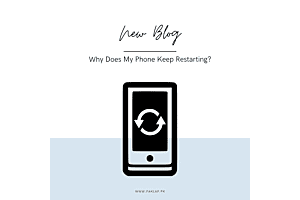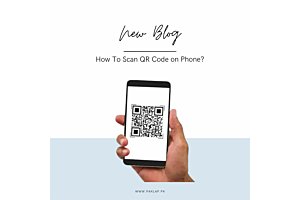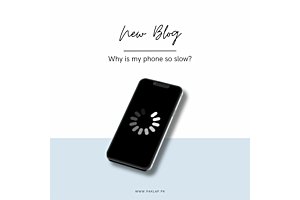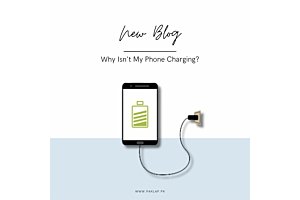Under Dependence or Over Dependence of Health Systems on tech
So, let’s start off with the ways tech has changed the contemporary health sector.
- Digitalization: While medical personnel can conveniently input patient’s data into a core digitized system, medical billers can update these records with test results and even provide evidence for medical insurance. On the other end of the spectrum, digitalization enables patients to access their medical records at the click of a button, without the trouble of having to comprehend doctors’ handwriting.
- Lower HealthCare costs: “As per a study conducted by the University of Michigan, the transition from manual to digital health data has lowered the cost of outpatient care by approximately 3%, which the researchers claimed accounted for saving $5.14 per patient on a monthly basis. Additionally, it enables large hospitals and clinics to both effectively and cost-effectively records patient data.
- Easier patient treatment: “Electronic health records (EHRs) provide physicians with access to their patients’ health history, enabling them to ascertain any potential diseases, intolerances, etc. EHRs are also mobile systems that can be accessed from almost every medical facility.
- Telemedicine: Terms such as ‘telemedicine’ and ‘telehealth’ often imply a video consultation or the sharing of health-related data. Telemedicine is pivotal to many fields, specifically for cardiovascular health. Telemonitoring tools can track symptoms, signs including blood levels- ideal to accommodate the needs of at-risk patients. Telemedicine also tends to be useful for healthcare personnel with regards to the following categories: determine whether or not patients require in-person treatment, provide specific forms of treatment, for example, psychological treatment or the diagnosis of minor infections, the preparation of prescriptions, offer therapy including but not limited to physical and speech therapy.
- Mobile health: Mobile health includes health and medical information provided via mobile tech. During 2015, nearly 80% of physicians used mobile technology and 25% of them applied it to patient treatment.”
- Increase in medical observance: After patients are discharged, following up on their medication routine becomes harder and unreliable medication adherence paves the stepping stones for exacerbating a patient’s illness, often leading to clinical readmissions. Mobile technology simultaneously offers solutions to patients innovative medical features including refill reminders, automated medication, and educational information regarding symptoms of certain medicines, which inevitably enable them to take their medications properly.
A sheer over-dependence on medical tech:
Research by Emily M. Campbell et al. reported that computerized provider order entry (CPOE) and other medical info. tech systems can surely help lower both the rate and frequency of medical errors whilst helping endorse standardization practices alongside improving the quality of both at-home and at-hospital patient treatment. Nonetheless, resorting to these systems can involve unintentional consequences. Their team implemented qualitative research methods to collect and analyze information explicating the unintended adverse impact concerning the use of CPOE. Overdependence on technology stood out among as the nine major types their team identified. Meticulous evaluation of their findings unraveled 3 themes: 1) at times when the system is down, it can result in chaos especially when there are insufficient backups in order. 2) users also tend to have unreal expectations concerning the accuracy and processing of data, and 3) some medical personnel cannot function efficiently in the absence of electronic health systems.
The insecurity attached to medical data: the hacking of medical records.
From witnessing hackers take over social media platforms, democratic electoral systems, the stock exchange and underwater internet cables, the phenomenon of hacking into medical records also poses danger to medical data. 2015 itself witnessed hackers stealing data accounting for nearly eighty million Anthem employees and customers- one of America’s largest health insurance companies. Truly, theft of merely contacts and addresses was committed, and no information of either disease or treatment came out, but it leads us to consider how small-scale clinics and health insurance companies can guarantee both customer and employee data protection when some of the largest companies have fallen prey to this information hijack. It is also necessary to bear in mind that patient data involves a huge business, with stolen health information offering monetary rewards of almost $10 each- approximately 10 or 20 times the value of a credit card number. This is primarily because the information can function to invent fake IDs (for the purchase of certain drugs, medicines, or submission of hoax insurance claims). While critics may dismiss this as one isolated example, one must consider that over 41 million patient records were hijacked during 2019, with a single incident affecting nearly 21 million records. Healthcare data hacks during 2019 further tripled from the rate the medical industry had encountered in 2018 accordance per a report from Protenus and DataBreaches.net. Protenus, a healthcare compliance analytics firm, evaluated data breach incidents revealed before the U.S. Department of Health and Human Services or the media during 2019.
The opportunity cost of health care hacking & data breaches:
According to IBM Security, health info. hacks have cost an average of $6.5 million. Their research constitutes in-depth interviews with almost five hundred companies across seventeen fields that experienced a hack. The costs entail breach detection, notifying individuals affected by the hack, post-breach response, and the business lost owing to downtime, reputational damage, and most importantly the long term impact on consumer trust.





